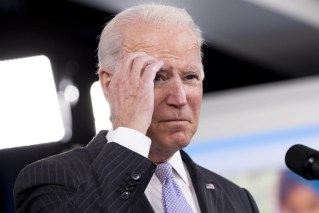What kept you? Housing reveals government too slow to respond to a crisis
The Palaszczuk Government has finally yielded to the obvious – the state has a housing crisis – but its response showed that too often it has to be shamed into making decisions.


Premier Annastacia Palaszczuk has launched her new youth crime bill. (AAP Image/Darren England)
The Palaszczuk Government has to deal with a strong streak of conservatism in Queensland. There is an overwhelming sense in our polity that you can’t scare the horses and that you can get away with only so much before the electorate starts to think things are moving too fast.
The speed of change under Campbell Newman’s LNP Government was a case in point, although there were other factors that added to its demise.
That’s a dilemma for the Palaszczuk Government, but too often it is seen as reactionary to issues raised and prosecuted in the media well before it decides to act.
The housing crisis is an example. Although it is not entirely to blame for it, the Government appears sluggish in its response to a crisis that has had a tangible impact on a significant proportion of the public.
It has been at crisis levels for more than a year and industry groups have not been quiet about it.
The same goes for its response to issues like the Star casino inquiry, the integrity issues and the CCC, hospitals, the potentially explosive issues relating to DNA testing at the Forensic and Scientific Services and the QBCC.
Not all of these issues have a strong connection with the public, but they point to a perception that there is a malaise in the Government, that it has become too comfortable in power and it won’t move until an issue becomes overwhelming.
Its decision to hold an inquiry is an admission that it has a role in fixing it so the first issue is why did it take so long?
Palaszczuk even admitted its importance.
“Nothing is more important than having a roof over your head – it’s a basic need – and the stories of people without secure housing are heartbreaking,” she said.
“I fully understand this is a tough time for many Queenslanders. We all know that recent interest rate increases by the independent Reserve Bank of Australia have made it tough for homeowners. All levels of government have a role to play in improving the current housing situation.”
Throwing the RBA under the bus is a nice deflection, but it’s not totally to blame.
To be fair the Government has made some strides in other policy areas, particularly in areas that have withered for decades like domestic violence, but even here it hasn’t set any speed records and its moves came on the back of some horrific murders.
Its investment manager, QIC, has also stitched together a deal with the Australian Retirement Trust for 1200 social and affordable dwellings by 2025 which is both a landmark deal and an admission that it has known it had to do something for some time. It’s also a very small step.
The housing crisis is one policy area it should have been on top of. It is fundamental to Labor’s base affecting low-income people more profoundly and there is a waiting list of 27,000.
To be clear, the situation is dire and has been compounded by poor planning, interest rates, interstate migration, the floods, the property boom which led to investors selling up, AirB&B and of course, Covid.
The Government’s planned land tax changes are not going to help because they are likely to drive investors interstate.
Property values have climbed 38.1 per cent since the onset of COVID-19 in March 2020 and rents increased 23 per cent in the same period. SQM Research says Brisbane’s asking rents have risen 2.63per cent in the past month and are up 22 per cent in a year. Its rental index for the city is $556 a week, which is higher than Melbourne at $500.
Sydney and Canberra rents are at $660 a week and SQM said rents nationally were rising at a “red-hot” pace.
According to research from the Australian Housing and Research Institute, a tight housing market is one of many factors that increase the risk of losing secure housing.
CoreLogic said the portion of median household income required to service a new rental lease across Brisbane reached 29.3 per cent in June 2022, the highest since 2009.
Vacancy rates are at crisis levels and have been for some time. In August, the Brisbane vacancy rate was 0.7 per cent. A good market is between 2 and 3 per cent and it hasn’t been there for two years.
Other areas in the state face the same issue. It is not an imagined issue.
To be fair, Queensland isn’t alone here but interstate migration has been issue here that hasn’t existed in other states and the Property Council report last week predicted Queensland would get an extra 220,000 interstate migrants over the next five years.
It is not an issue that can easily fixed and progress is likely to be slow, but working with local government on land supply is a major factor.












